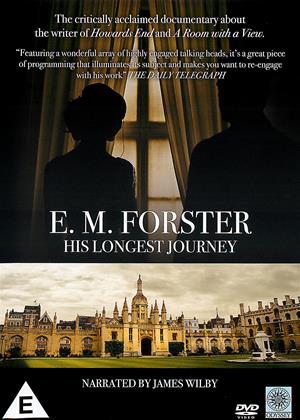
Rent E.M. Forster: His Longest Journey (2020)
3.0 of 5 from 9 ratings
0h 50min
- General info
- Available formats
- Synopsis:
E. M. Forster wrote 'The Longest Journey' in 1907, before his full adult life had started. The film reflects Forster's view that this book, above all his books, describes what he felt was to happen to him in his own life. Said to be E.M. Forster's own favourite of all his novels - and the most autobiographical - 'The Longest Journey' was published in 1907 and is described by Forster as the one he is 'most glad to have written'. 'EM Forster: His Longest Journey' traces Forster's growing recognition of his development as a writer, of his homosexuality and his need to initiate himself into his own true nature. We understand Forster's extraordinary sexual shyness and diffidence in his youth and his sexual promiscuity after his great success with 'Passage to India'. Through interviews with his biographers and literary critics, the film traces the resonances in Forster's life that that are intimated in the novel. We learn of his lovers and his final long relationship with Bob Buckingham, the good-looking policeman, in whose wife's arms Forster died. The film includes appearances by James Ivory, David Lean and Helena Bonham Carter. It features extracts from 'Howards End' and 'Maurice' and scenes from the set of 'A Passage to India'. - Actors:
- E.M. Forster, James Ivory, Professor Wendy Moffat, Nicola Beauman, Bill Goldstein, Professor Max Saunders, Professor Santanu Das, Bob Buckingham, David Lean, Helena Bonham Carter
- Directors:
- Adrian Munsey, Vance Goodwin
- Producers:
- Adrian Munsey, Vance Goodwin
- Narrated By:
- James Wilby
- Studio:
- Odyssey
- Genres:
- Children & Family, Documentary, Special Interest
More like E.M. Forster: His Longest Journey
Found in these customers lists
129 films by sta
